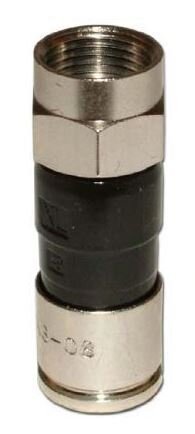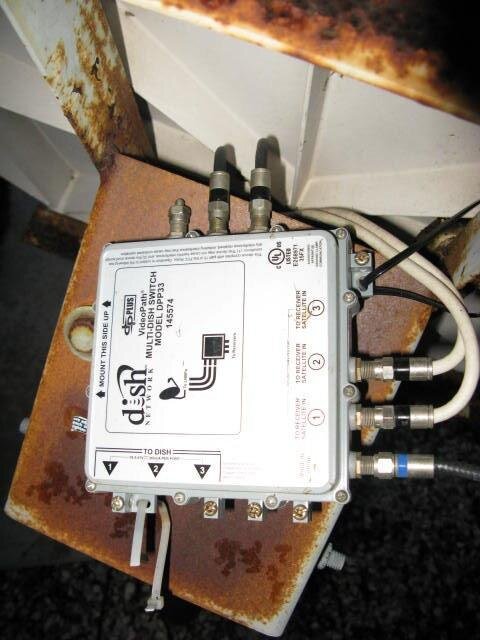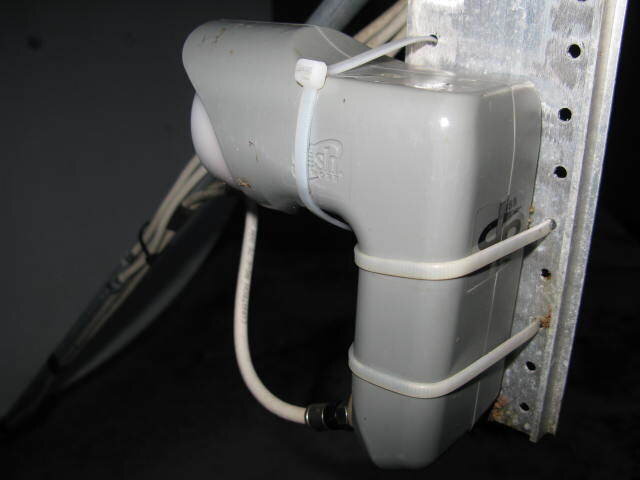Hello All - my first post here. I've been casually reading and learning for about two years now (and I've learned a LOT - thanks!), but I have a question that I can't find the answer to, and I'm hoping maybe someone can point me in the right direction.
First of all, I don't want to give too much away about my situation, because I have a valid, paid account with Dish, and I want to keep it that way. I will say that I'm not in the States, though. However, myself, a lot of my friends, and tons of other people where I'm located have Dish service (and have for a very long time), and overall, it works well.
Most of us just pick up satellite 119 on a 4 foot to 6 foot dish, many also add 110 (just takes a little fabrication to make a bracket to add an offset LNB on the same dish), and some also pick up 72.7 on another 6 foot dish. There were some that also used 61.5, but when the new satellite went up (moving almost everything over to spot beams), most people stopped using it. I've even heard of some people picking up 77. In my case, I use one 6 foot dish for 119 and 110, and another 6 foot dish for 72.7.
My setup has been working pretty good for a couple of years, but occasionally I've had issues with reception on 72.7 (119 and 110 don't give any issues - excellent signal strength on both of them). I've re-aimed the dish for 72.7 more times than I would like to admit, have swapped cables, LNBs, ports - everything that I can think of (short of buying an 8 foot dish), to no avail.
This is my problem - some transponders have good signal strength, but others don't. I've noticed that the strength will change throughout the day. For the longest time, it didn't really matter, because the strength always stayed high enough for me to watch. However, then I started noticing that at certain times of day, I would lose certain channels. As of the last couple of weeks, I've now completely lost the signal on some transponders (unfortunately, these include the ones for the channels that I like to watch).
Here are my signal strengths from earlier this evening (about 6 pm):
NOTE - an * next to the signal strength number means that the screen said "Wrong Sat - Name Not Acquired!" in the lower left corner
Transponder-Strength
1-0
2-16*
3-17
4-28
5-0
6-18*
7-17
8-28
9-0
10-18*
11-18
12-30
13-0
14-19*
15-18
16-30
17-0
18-20*
19-19
20-29
21-0
22-18*
23-18
24-30
25-0
26-19*
27-19
28-30
29-1*
30-20*
31-19
32-32
You can see that there is a pattern - one transponder with 0, then one around 18 (plus the error message), another one around 18 (without the error message), and then one around 30. Then the pattern repeats. I've been around long enough to know that patterns usually happen for a reason (but what is it?!?).
Honestly, the channel that I watch most using 72.7 is Fox Sports 1 (for their NASCAR race coverage), and of course transponder 17 is now getting a strength of 0 (I would be thrilled if Dish would just move FS1 to one of the other transponders that I never watch, like 8, 12, or 16). Being forced to watch the Sprint Cup All-Star race this past weekend in SD was the straw that broke the camels back.
Some equipment info:
As already mentioned - two 6 foot offset dishes, one with single LNB for 72.7, one with two LNBs for 119 and 110 (all LNBs Dish Pro Plus)
A Dish Pro Plus 33 Multi-Dish switch
Dish Solo Node
Hopper with two Joeys
Many of the other people where I live that also try to pick up 72.7 have told me that they have the same types of issues with reception. I had one guy tell me that there is an older version of the DPP LNB that had better gain, but that they are very rare. Unfortunately, I have no idea what to look for, and scouring eBay hasn't done me any good, nor have I seen any mention about such a thing here or on the internet. I also had a guy tell me that I'm just going to have to buy an 8 foot dish, but he said that they're a couple thousand dollars, which I'd rather not spend. I'm guessing that I'm just screwed. However, it's very frustrating when I have decent signal strength on some transponders, but not on others. When I see other people here on the forum list their strengths, they are all typically pretty equal.
Does anyone have any idea as to why I'm seeing such different signal strengths?
Any suggestions as to how to correct the problem?
Thanks for reading....
First of all, I don't want to give too much away about my situation, because I have a valid, paid account with Dish, and I want to keep it that way. I will say that I'm not in the States, though. However, myself, a lot of my friends, and tons of other people where I'm located have Dish service (and have for a very long time), and overall, it works well.
Most of us just pick up satellite 119 on a 4 foot to 6 foot dish, many also add 110 (just takes a little fabrication to make a bracket to add an offset LNB on the same dish), and some also pick up 72.7 on another 6 foot dish. There were some that also used 61.5, but when the new satellite went up (moving almost everything over to spot beams), most people stopped using it. I've even heard of some people picking up 77. In my case, I use one 6 foot dish for 119 and 110, and another 6 foot dish for 72.7.
My setup has been working pretty good for a couple of years, but occasionally I've had issues with reception on 72.7 (119 and 110 don't give any issues - excellent signal strength on both of them). I've re-aimed the dish for 72.7 more times than I would like to admit, have swapped cables, LNBs, ports - everything that I can think of (short of buying an 8 foot dish), to no avail.
This is my problem - some transponders have good signal strength, but others don't. I've noticed that the strength will change throughout the day. For the longest time, it didn't really matter, because the strength always stayed high enough for me to watch. However, then I started noticing that at certain times of day, I would lose certain channels. As of the last couple of weeks, I've now completely lost the signal on some transponders (unfortunately, these include the ones for the channels that I like to watch).
Here are my signal strengths from earlier this evening (about 6 pm):
NOTE - an * next to the signal strength number means that the screen said "Wrong Sat - Name Not Acquired!" in the lower left corner
Transponder-Strength
1-0
2-16*
3-17
4-28
5-0
6-18*
7-17
8-28
9-0
10-18*
11-18
12-30
13-0
14-19*
15-18
16-30
17-0
18-20*
19-19
20-29
21-0
22-18*
23-18
24-30
25-0
26-19*
27-19
28-30
29-1*
30-20*
31-19
32-32
You can see that there is a pattern - one transponder with 0, then one around 18 (plus the error message), another one around 18 (without the error message), and then one around 30. Then the pattern repeats. I've been around long enough to know that patterns usually happen for a reason (but what is it?!?).
Honestly, the channel that I watch most using 72.7 is Fox Sports 1 (for their NASCAR race coverage), and of course transponder 17 is now getting a strength of 0 (I would be thrilled if Dish would just move FS1 to one of the other transponders that I never watch, like 8, 12, or 16). Being forced to watch the Sprint Cup All-Star race this past weekend in SD was the straw that broke the camels back.
Some equipment info:
As already mentioned - two 6 foot offset dishes, one with single LNB for 72.7, one with two LNBs for 119 and 110 (all LNBs Dish Pro Plus)
A Dish Pro Plus 33 Multi-Dish switch
Dish Solo Node
Hopper with two Joeys
Many of the other people where I live that also try to pick up 72.7 have told me that they have the same types of issues with reception. I had one guy tell me that there is an older version of the DPP LNB that had better gain, but that they are very rare. Unfortunately, I have no idea what to look for, and scouring eBay hasn't done me any good, nor have I seen any mention about such a thing here or on the internet. I also had a guy tell me that I'm just going to have to buy an 8 foot dish, but he said that they're a couple thousand dollars, which I'd rather not spend. I'm guessing that I'm just screwed. However, it's very frustrating when I have decent signal strength on some transponders, but not on others. When I see other people here on the forum list their strengths, they are all typically pretty equal.
Does anyone have any idea as to why I'm seeing such different signal strengths?
Any suggestions as to how to correct the problem?
Thanks for reading....





